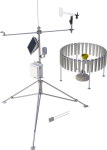What We Do
Check out some awesome examples of what our equipment can do in this area
Customise a System
In addition to our standard systems available, many of the systems we provide are customised. Tell us what you need, and we’ll help you configure a system that meets your exact needs.
Instrumentation
We offer a variety of products that can be used to create systems for Avalanche, Ski, Alpine & Polar. Many of the major components used to create these systems are listed below. Please let us know if we can help you configure a system.
More Details about Our Avalanche, Ski, Alpine & Polar Systems
Data loggers for unattended monitoring
Our monitoring stations are based around a programmable data logger (typically a CR1000 or CR3000) that measures the sensors, then stores and transmits the data. We designed our data loggers to provide a high level of station customisation. They have programmable execution intervals, operating temperature ranges down to -55°C, on-board instructions for commonly used sensors, and adequate input channels to accommodate many different sensor configurations.
CR1000
If needed, channel capacity can be expanded using multiplexers, including a model designed specifically for thermocouples. Our data loggers interface directly to most sensors, eliminating external signal conditioning. Powerful on-board instruction sets allow unattended control decisions based on time or conditional events. For example, peripherals such as heaters or specialised sensors can be actuated based on temperature, wind speed, solar radiation, or some other measured parameter or event. These instruction sets contain programmed algorithms that process measurements and output results in the desired units of measure. Wind vector, wet bulb, histogram, and sample on maxima or minima are all standard to the data logger instruction sets.
CR3000
Measurement processing and data storage are programmable, but measurements are typically processed and stored at hourly and daily intervals (e.g., maxima, minima, averages). True averages can be calculated and stored by the data loggers. Conditional outputs can also be processed and stored. For example, data can be stored at faster intervals based on events such as increased wind speeds or subnormal temperatures.
Sensors
Almost any sensor can be measured by our data loggers, allowing stations to be customised for each site. Typical sensors used with our stations include, but are not limited to: relative humidity, solar radiation, wind speed and direction, air temperature, water temperature, soil temperature, precipitation, snow depth, barometric pressure, soil moisture, as well as strain gauges, accelerometers, pressure transducers, GPS receivers, linear potentiometers, and many more.
Data Retrieval
We offer multiple communications options for data retrieval, allowing stations to meet exact needs. Telecommunication options include radio frequency, satellite (Argos, GOES), telephone (landline, voice-synthesized, cellular), short-haul, and multidrop. On-site options include storage module, laptop computer, and data logger keyboard/display. Robust error-checking and low-power use ensure your data arrives uncorrupted and as scheduled. We can even help you post your data to the Internet.
Software
Our Windows-based software simplifies data logger programming, data retrieval, and report generation. The data logger program can be modified at any time to accommodate different sensor configurations or new data processing requirements.
Case Studies
Scientists and land-use managers have long recognized the importance of forest lands for their role......read more
Forecasting and weather-data recording in preparation for the 2002 Olympic Winter Games allowed a unique......read more
During the winter of 1991-92, a Campbell Scientific weather station provided important avalanche forecasting information......read more



